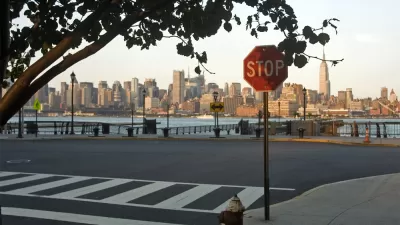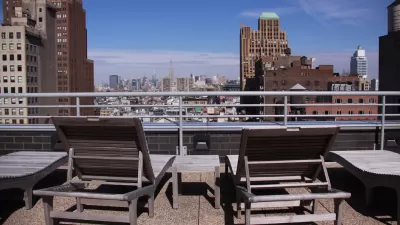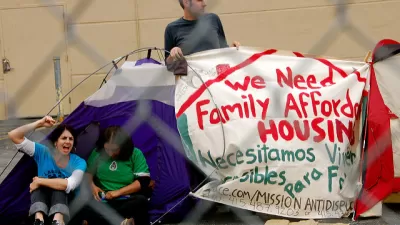After a half century of growth driven by families fleeing New York City, New Jersey's northern suburbs face an uncertain future as young families, young professionals and retirees find a resurgent Big Apple more to their liking.

"During the last half of the 20th century, New Jersey created almost 10 times as many new jobs as New York City and almost all of the state’s tract homes, shopping malls and large office complexes were built, according to one recent Rutgers University study."
However, according to Stephanie Akin, "Today’s New Jersey is experiencing a retraction of the employment gains, relative to New York City, that it experienced during the half-century after the baby boom: a decline in the number of families with small children and a new glut of vacant office space in sprawling campuses built to accommodate workers who wanted to avoid the city."
"The city planners, real estate agents and academics who follow such trends tend to agree that the region will need to reinvent itself to keep pace with the resurgence of New York City," says Akin. "Some developers are already talking about tearing down the once gleaming office campuses that are now outdated and too big for modern tenants. Instead, they would build high rises in riverside municipalities, like Edgewater and Fort Lee, to capitalize on the new taste for urban living that has sparked revitalizations in Jersey City and Hoboken."
FULL STORY: Reverse migration from North Jersey to New York City signals a new challenge

Americans May Be Stuck — But Why?
Americans are moving a lot less than they once did, and that is a problem. While Yoni Applebaum, in his highly-publicized article Stuck, gets the reasons badly wrong, it's still important to ask: why are we moving so much less than before?

Study: Maui’s Plan to Convert Vacation Rentals to Long-Term Housing Could Cause Nearly $1 Billion Economic Loss
The plan would reduce visitor accommodation by 25,% resulting in 1,900 jobs lost.

Placekeeping: Setting a New Precedent for City Planners
How a preservation-based approach to redevelopment and urban design can prevent displacement and honor legacy communities.

San Diego Swaps Parking Lane for Kid-Friendly Mini Park
The block-long greenway will feature interactive play equipment and landscaping.

Tracking the Invisible: Methane Leaks From LA’s Neighborhood Oil Sites
Environmental advocates are using infrared technology to monitor and document methane leaks from neighborhood oil sites, filling regulatory gaps and pushing for stronger protections to safeguard community health and the climate.

Montana Bill Promotes Parking Reform
A bill before the Montana state senate would bar cities from requiring more than one parking spot per new housing unit.
Urban Design for Planners 1: Software Tools
This six-course series explores essential urban design concepts using open source software and equips planners with the tools they need to participate fully in the urban design process.
Planning for Universal Design
Learn the tools for implementing Universal Design in planning regulations.
Caltrans
Heyer Gruel & Associates PA
Institute for Housing and Urban Development Studies (IHS)
City of Grandview
Harvard GSD Executive Education
Salt Lake City
NYU Wagner Graduate School of Public Service
City of Cambridge, Maryland





























